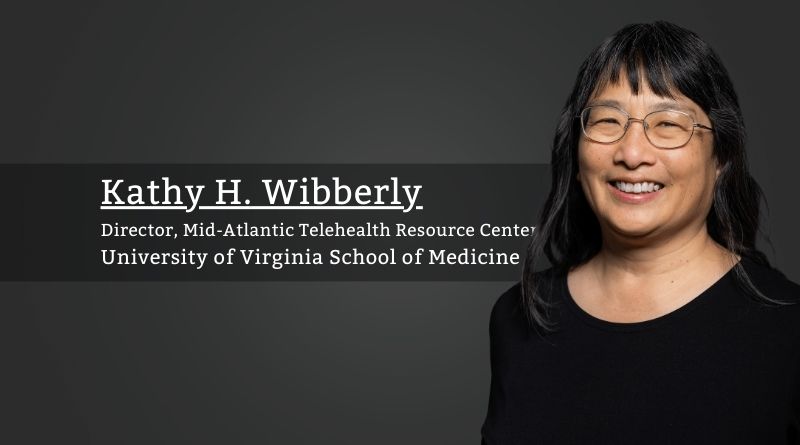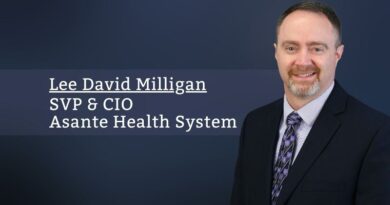Telehealth Competency: Not a Skill But a Transformative Mindset
By Kathy H. Wibberly, Ph.D., Director, Mid-Atlantic Telehealth Resource Center, Karen S. Rheuban Center for Telehealth, University of Virginia School of Medicine
The healthcare industry has undergone a profound transformation, driven by technological advancements and changing patient needs. One of the most significant shifts has been the widespread adoption of telehealth services fueled by the COVID-19 Public Health Emergency (PHE). It took just a little over three years since the start of the PHE for most healthcare providers to report that they are comfortable, if not proficient, with telehealth. What does it really mean to be proficient with telehealth? What are the competencies required to claim proficiency? In March 2021, the Association of American Medical Colleges (AAMC) published “Telehealth Competencies Across the Learning Continuum” as part of their New and Emerging Areas in Medicine Series. They intended these competencies to help educators design and deliver curricula and related activities and help learners in their individual professional development in telehealth. They explicitly state that the competencies are not intended to be used for high-stakes assessments or accreditation of schools, programs, or institutions. I would beg to differ.
In this digital age, where technology continues to redefine our daily lives, healthcare professions training programs cannot afford to lag behind. Telehealth competency has emerged as a critical skill set for healthcare professionals, but it is far more than a checkbox on a resume, taking a class, or acquiring a set of technical skills. The AAMC was spot on in saying that telehealth competencies go across the learning continuum. However, these competencies should not be seen as “nice to haves”, but as imperatives. Without high-stakes assessments or impact on accreditation, it could take years or even decades before this happens. These competencies need to be woven into the very fabric of every aspect of health professions education with a sense of urgency….and even that is insufficient.
Telehealth competency necessitates adopting a transformative mindset, transcending the notion of a mere class or sequence of courses.
Historically, health professions education has been built on the foundation of the in-person model of care. Therefore, telehealth has been viewed as a mechanism for extending access to care in situations where in-person care is not feasible and/or as a more convenient alternative to in-person care. Telehealth competence is, therefore, defined as the ability to successfully replicate in-person services in a virtual setting. Admittedly, this is no small feat. It requires technical proficiency, an understanding of legal and ethical considerations, the ability to communicate clearly and compassionately through technology, the capacity to ensure data privacy and security, the skills to assure equity in access for patients from diverse cultures and needs and more. These are critically important competencies that many providers have yet to master. But I want to make the case that these are starting points for telehealth competency, and not end goals.
There is significantly more that can be done with digital health tools that augment in-person care, and for which there is no in-person equivalent. For example, telehealth also brings the opportunity to monitor patients remotely, gather data with the aid of artificial intelligence (AI) for better decision-making, and provide timely interventions—all of which can lead to better health outcomes—transitioning from the status quo in-person care model to a hybrid model that fully embraces all available telehealth and digital health tools is needed for the future of modern healthcare.
We all need to take a step back and rethink how we educate, practice, and experience healthcare. What better place to start than with health professions education? Telehealth competency necessitates adopting a transformative mindset, transcending the notion of a mere class or sequence of courses. If we work backward, a transformative mindset in health professions education is one that produces health professionals who enter the workforce:
- Knowing the value of telehealth and how technology can be used to improve access to care, enhance patient experience, and lead to better health outcomes.
- Having a good understanding and proficiency in navigating technology, legal and ethical considerations, telehealth etiquette, and telehealth equity.
- Feeling empowered to make sound clinical decisions about what digital tools to use, when and with whom to use them, and how to assess whether these tools add value.
- Able to quickly adapt and pivot as new tools emerge; proactively integrating new technologies and methods into practice as appropriate.
How might we change the way we educate providers to achieve these objectives? This process will require a combination of intentional design and imagination, and it must start now. We need to look carefully at the structure of existing curricula, the sequencing of courses, the teaching methods and experiences, the assessment and evaluation tools, as well as the accreditation requirements. We also need to look closely at faculty professional development. Having the next generation of health professionals equipped not only with technical skills; but also, with the ability to provide patient-centered care, navigate legal and ethical complexities, embrace technology and innovation, and adapt to an ever-changing healthcare landscape is imperative for ensuring that these professionals are not just ready for the future; but able to shape it.



